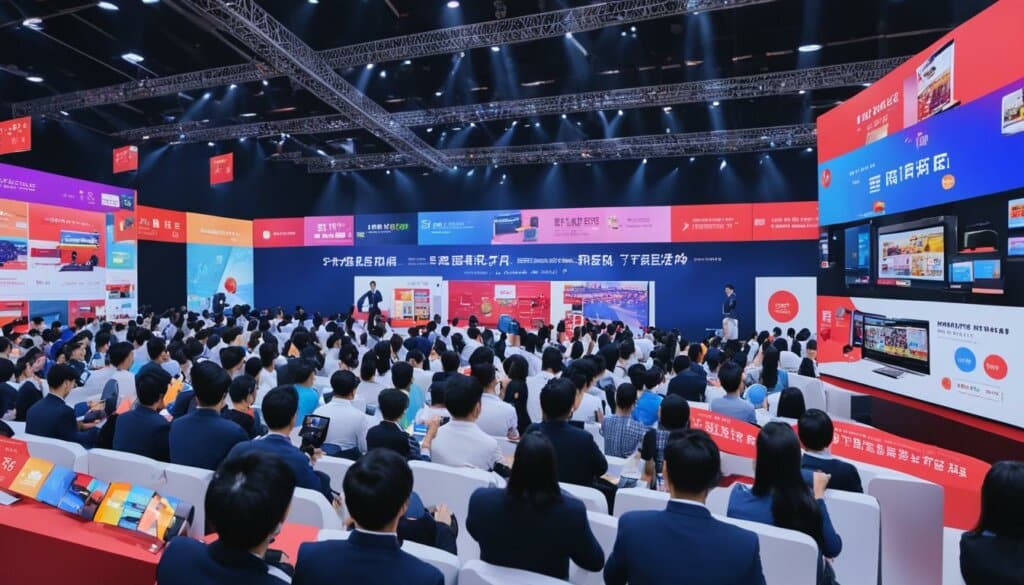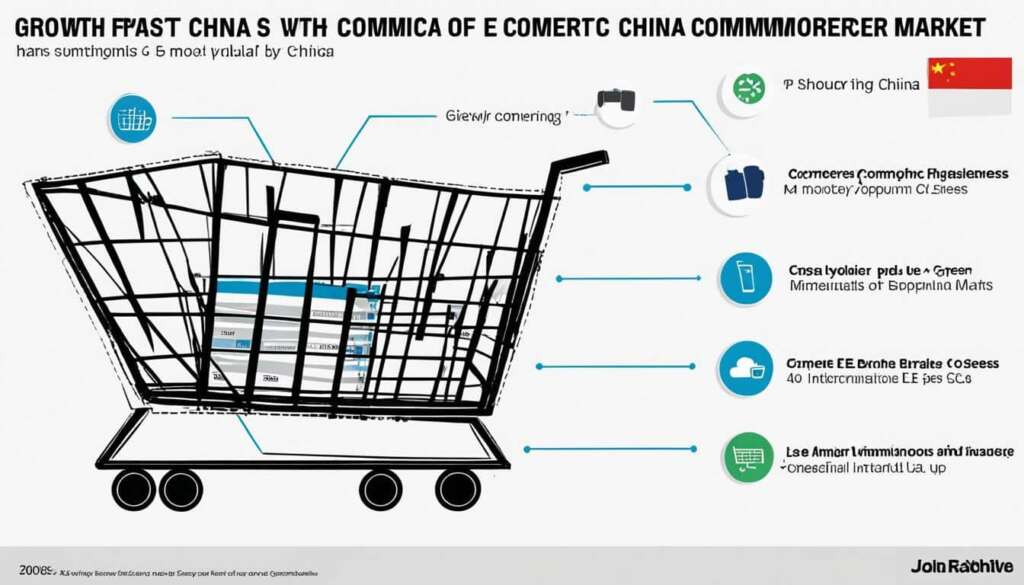Table of Contents
Live streaming has become an essential tool for real-time and interactive communication across various industries. It offers marketers a dynamic platform to connect with their target audiences, creating authentic and immersive brand experiences. The popularity of live streaming in China has led to the rise of livestream commerce, which is projected to account for 19.2% of retail e-commerce sales in China by 2023. However, in the US, livestream shopping has not yet gained the same traction, with only 18% of people having shopped via livestream. Nonetheless, US retail social commerce sales are projected to reach $130.10 billion by 2026, making livestream commerce a unique opportunity for marketers and brands to engage with consumers.
The Impact of Livestreaming on Marketing
Livestreaming significantly impacts marketing by providing an interactive and engaging platform for businesses to directly connect with their audiences. It allows marketers to showcase products, host events, and foster relationships, ultimately enhancing brand visibility, customer engagement, and sales potential.
One of the key advantages of livestreaming is its ability to offer a real-time experience to viewers. Unlike pre-recorded content, livestreams create a sense of immediacy, allowing brands to connect with their audience in the moment. This live interaction fosters a deeper level of engagement, as viewers can participate in Q&A sessions, leave comments, and receive instant responses.
Furthermore, livestreaming provides a unique opportunity for businesses to showcase their products or services in an authentic way. By visually demonstrating the features and benefits of a product, brands can create a more tangible experience for potential customers. This interactive format also enables businesses to highlight the unique selling points of their offerings, helping to differentiate them from competitors.
“Livestreaming allows brands to humanize their marketing efforts and foster authentic connections with their audience.”
Brand visibility is another crucial aspect that livestreaming enhances. By broadcasting live content, brands can reach a wider audience, attracting potential customers who may not have been aware of their products or services. The shareability of livestreams also extends their reach, as viewers can easily share the content with their own social networks, leading to increased brand exposure.
In terms of sales potential, livestreaming offers a direct avenue for businesses to drive conversions. By showcasing products in action and providing real-time information, livestreams create a sense of urgency and FOMO (fear of missing out) that can motivate viewers to make purchasing decisions. Additionally, livestreams often include limited-time offers or exclusive discounts, further incentivizing viewers to take immediate action.
As livestreaming continues to gain momentum, platforms like TikTok, Poshmark, and eBay are recognizing its potential and attempting to replicate the success of livestream commerce in China. By harnessing the power of livestreaming, businesses can elevate their marketing strategies, engaging their audience in meaningful ways and driving brand growth.
Benefits of Livestreaming in Marketing:
- Direct and real-time communication with the audience
- Authentic product demonstrations and differentiation
- Increased brand visibility and exposure
- Enhanced customer engagement and interactivity
- Opportunity to drive immediate sales
https://www.youtube.com/watch?v=8Ao4Qom0Kdg
Reaching Target Audiences through Livestreaming
Livestreaming is a powerful tool that enables retailers to connect with their target audiences in real time, fostering trust, authenticity, and a sense of community. By engaging with viewers through immediate interaction, retailers can answer questions, respond to comments, and address concerns, creating a responsive and inclusive environment.
“Livestreaming allows us to connect with our audience on a personal level. It’s not just about selling products, but also about building relationships and trust,” says Sarah Johnson, CEO of a leading fashion brand.
A key example of leveraging the sense of urgency and exclusivity in livestreams is luxury fashion brand Telfar. They have introduced the concept of “drops,” offering exclusive access to limited-edition products during livestreams. This approach not only creates a buzz among viewers but also encourages a strong sense of community as fans eagerly await these exclusive opportunities.
When it comes to livestreaming platforms, there are several popular social media platforms in the US that retailers can utilize. These include TikTok, Instagram, YouTube, Facebook, and Twitch. Each platform offers unique features and benefits, catering to different target audiences and content preferences.
Building Trust and Authenticity
One of the key advantages of livestreaming is its ability to build trust and authenticity. When viewers see real-time interactions and transparent communication between retailers and their audience, it enhances their confidence in the brand and its products. This trust and authenticity are crucial in today’s digital landscape, where consumers value transparency and genuine connections.
Furthermore, livestreaming fosters a sense of community among viewers. By creating an inclusive space where comments and questions are addressed, retailers can establish a loyal and engaged fan base. This sense of community encourages viewers to share their experiences, recommendations, and excitement, further strengthening the bond between the retailer and its audience.
Image: Captivating Livestreaming Experiences

As seen in the image above, livestreaming offers a captivating and immersive experience for audiences. Retailers can use this platform to showcase products, host interactive events, and engage with their community in ways that traditional marketing methods cannot match.
The Role of Influencer Marketing in Livestreaming
Influencer marketing plays a pivotal role in livestreaming, allowing brands to collaborate with influencers to broaden their impact. Livestreams offer a platform for digital creators to present content that feels more authentic and engaging to viewers. The influence of digital creators helps consumers make purchasing decisions on products they haven’t experienced in-store. It is important to select influencers who exude trustworthiness, possess expertise in livestreaming, and excel in engaging with their audience.
The Rise of Gaming Livestreams
Gaming livestreams have witnessed significant growth in recent years, attracting a dedicated fanbase on popular platforms like Twitch, Facebook Gaming, and YouTube. These platforms have carved out their own niches within the livestreaming industry, offering gamers and gaming enthusiasts unique experiences and opportunities for engagement.
The popularity of esports, which refers to competitive video gaming, has played a pivotal role in the rise of gaming livestreams. Esports has emerged as a thriving industry with a massive following and a global audience. This has opened up avenues for advertisers and brands to tap into the enormous ad revenue potential presented by gaming livestreams.
What’s particularly interesting about gaming livestreams is that they have transcended beyond the gaming industry itself. Celebrities, athletes, lifestyle influencers, and even politicians have recognized the power of platforms like Twitch and have started leveraging gaming livestreams to connect with new audiences.
This shift toward mainstream adoption of gaming livestreams has the potential to diversify user demographics and attract individuals who may not traditionally identify as gamers. The interactive nature of livestreams allows for real-time engagement and creates a sense of community among viewers, contributing to the expanding appeal of gaming livestreams.
The Role of Platforms:
Gaming livestreams owe much of their success to platforms like Twitch, Facebook Gaming, and YouTube.
◆ Twitch: Launched in 2011, Twitch has become synonymous with gaming livestreams, offering a wide range of gaming-related content, including live gameplay, tournaments, and gaming talk shows. Twitch boasts a large and active community of streamers and viewers dedicated to gaming.
◆ Facebook Gaming: Facebook has also jumped into the gaming livestreaming scene with its dedicated platform, Facebook Gaming. With its massive user base, Facebook Gaming offers a unique opportunity for streamers to reach a wider audience and tap into the expansive social network’s resources.
◆ YouTube: YouTube’s gaming channels have also gained significant traction, attracting both casual gamers and dedicated enthusiasts. With its robust infrastructure and extensive reach, YouTube gaming livestreams have become a popular choice for creators and viewers alike.
Charting the Growth of Gaming Livestreams:
The growth of gaming livestreams is evidenced by various statistics and achievements within the industry. Below is a table highlighting some key milestones and figures:
| Platform | Key Achievements |
|---|---|
| Twitch |
|
| Facebook Gaming |
|
| YouTube |
|
Gaming livestreams hold immense potential for further growth and innovation within the livestreaming industry. As more individuals discover the appeal and interactivity of gaming livestreams, the future of this niche looks promising.
The Success of Live Commerce in China
Live commerce in China has experienced remarkable growth, quickly establishing itself as a major sales channel within a relatively short span of fewer than five years. In 2020, live commerce accounted for an estimated $171 billion in sales, and this figure is projected to surge to an impressive $423 billion by 2022.
This surge in popularity can be attributed to the effectiveness of live commerce in showcasing a diverse range of product categories. The most prominent product categories featured in live commerce streams in China include apparel and fashion, beauty products, food, consumer electronics, and home decor. These categories resonate with consumers eager to explore and purchase a wide variety of goods.
Generation Z and Millennials as the Dominant Audience
Live commerce has successfully captured the attention of Generation Z and millennial consumers, who comprise the majority of the audience. With live commerce platforms becoming increasingly prevalent, nearly 30% of Chinese internet users have embraced live commerce as a preferred method of online shopping.
The live commerce boom in China can be attributed to factors such as the convenience and immediacy it offers, as well as the opportunity for consumers to engage with sellers in real time. Additionally, the interactive nature of live commerce cultivates a sense of excitement and exclusivity, attracting the attention of younger generations who value authenticity and unique shopping experiences.

As live commerce continues to flourish in China, it presents significant opportunities for both established brands and emerging retailers to tap into this thriving sales channel. By embracing the power of live commerce, businesses can stay on the cutting edge of consumer trends and effectively engage with their target audience.
Conclusion
Livestreaming e-commerce presents brands and retailers with a range of benefits, enabling increased engagement, differentiation, tangibility, and authenticity. By embracing this innovative platform, businesses can create dynamic and immersive shopping experiences that cater to the growing demand for interactivity and personalized content. While livestream commerce is still emerging in the US and the UK, the remarkable success it has achieved in China indicates that it has the potential to become a significant player in the future of e-commerce.
As the industry evolves, retailers should consider incorporating livestreaming into their marketing strategies to maintain a competitive edge and meet the changing demands of consumers. By harnessing the power of livestreaming e-commerce, brands can forge meaningful connections with their target audiences, establish trust, and drive sales. The future of e-commerce lies in the seamless synergy between technology and human engagement, and livestreaming presents a unique opportunity to deliver personalized and interactive shopping experiences that meet the evolving expectations of customers.
Looking ahead, it is clear that livestreaming e-commerce will continue to shape the future of retail. As technological advancements further enhance the capabilities of livestreaming platforms, we can expect to see even greater integration of this medium into the marketing strategies of brands and retailers. By staying ahead of the curve and embracing livestreaming e-commerce, businesses can position themselves for success in a rapidly evolving digital landscape.
FAQ
What is livestreaming e-commerce?
Livestreaming e-commerce is a form of online shopping that combines live streaming video and interactive features. It allows brands and retailers to showcase products, host events, and engage with customers in real-time.
How does livestreaming impact marketing?
Livestreaming provides a dynamic platform for businesses to directly connect with their audiences, enhancing brand visibility, customer engagement, and sales potential. It allows marketers to create authentic and immersive brand experiences.
Which social media platforms are popular for livestreaming in the US?
Popular livestreaming social media platforms in the US include TikTok, Instagram, YouTube, Facebook, and Twitch.
How does influencer marketing contribute to livestreaming?
Influencer marketing plays a pivotal role in livestreaming by allowing brands to collaborate with influencers to broaden their impact. Influencers help create authentic and engaging content that influences viewers’ purchasing decisions.
What are gaming livestreams and which platforms are popular?
Gaming livestreams are live broadcasts of gameplay and related content. Popular platforms for gaming livestreams include Twitch, Facebook Gaming, and YouTube’s gaming channels.
How successful is live commerce in China?
Live commerce has rapidly evolved in China, becoming a major sales channel. In 2020, it accounted for an estimated $171 billion in sales and is projected to reach $423 billion by 2022.
What are the product categories showcased in live commerce?
The most showcased product categories in live commerce are apparel and fashion, followed by beauty products, food, consumer electronics, and home decor.







